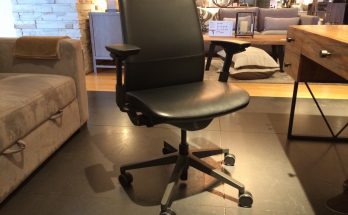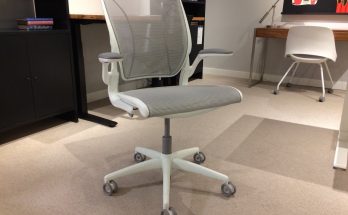This chair is semi-famous as being the subject of a TED talk, in which the designer explains why he designed this chair differently from all the others out there. Instead of being filled with a million different adjustments and other confusing mechanisms, the Freedom chair has just a few, located as intuitively as possible, combined with self-adjusting recline tension to accommodate anyone who sits in the chair, without much fuss. It’s all part of Humanscale’s focus on simplicity and ease of operations, which is helpful when it comes to shared seating, whether it’s for a family workstation, or a conference room.
I do, however, think its design has been exceeded by subsequent Humanscale chairs. Self-adjusting mechanisms can be great, especially if you just want the ease of use, but some of the future iterations on the main idea have included more comfortable backrests, smoother operations, and other useful changes. It’s also limited in its adjustability, so it won’t accommodate every user out there, and it might not be the best choice for all-day use or customized needs.
Still, it has a simplicity that makes it easily functional, and the intuitive controls are a welcome change from the rest of the crowd, so let’s see what it does right.
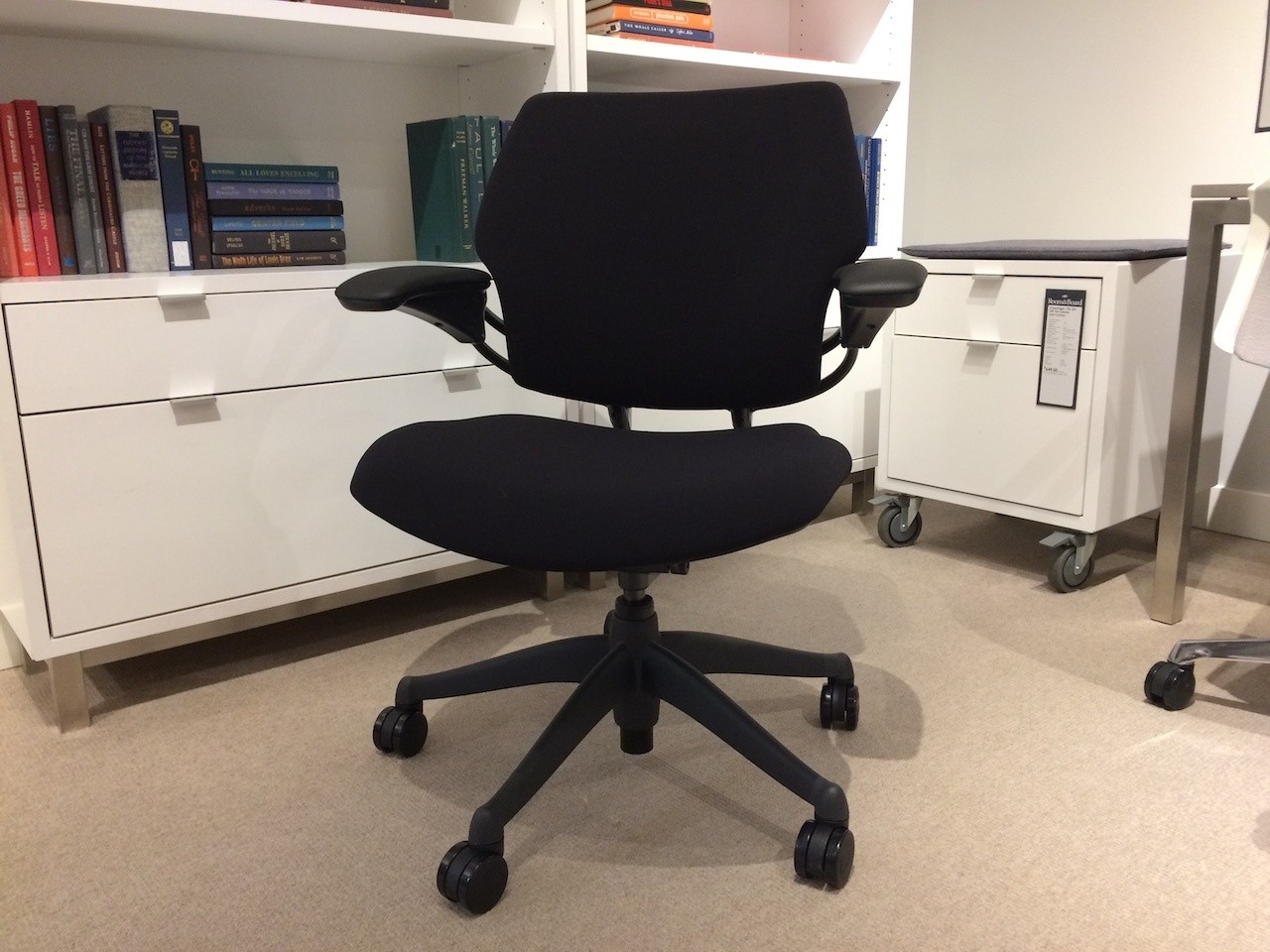
Humanscale Freedom Chair, in review
Let’s start with a closeup, where you can see the simplicity; along the right-hand side, under the seat, there’s merely a single adjustment, for chair height.
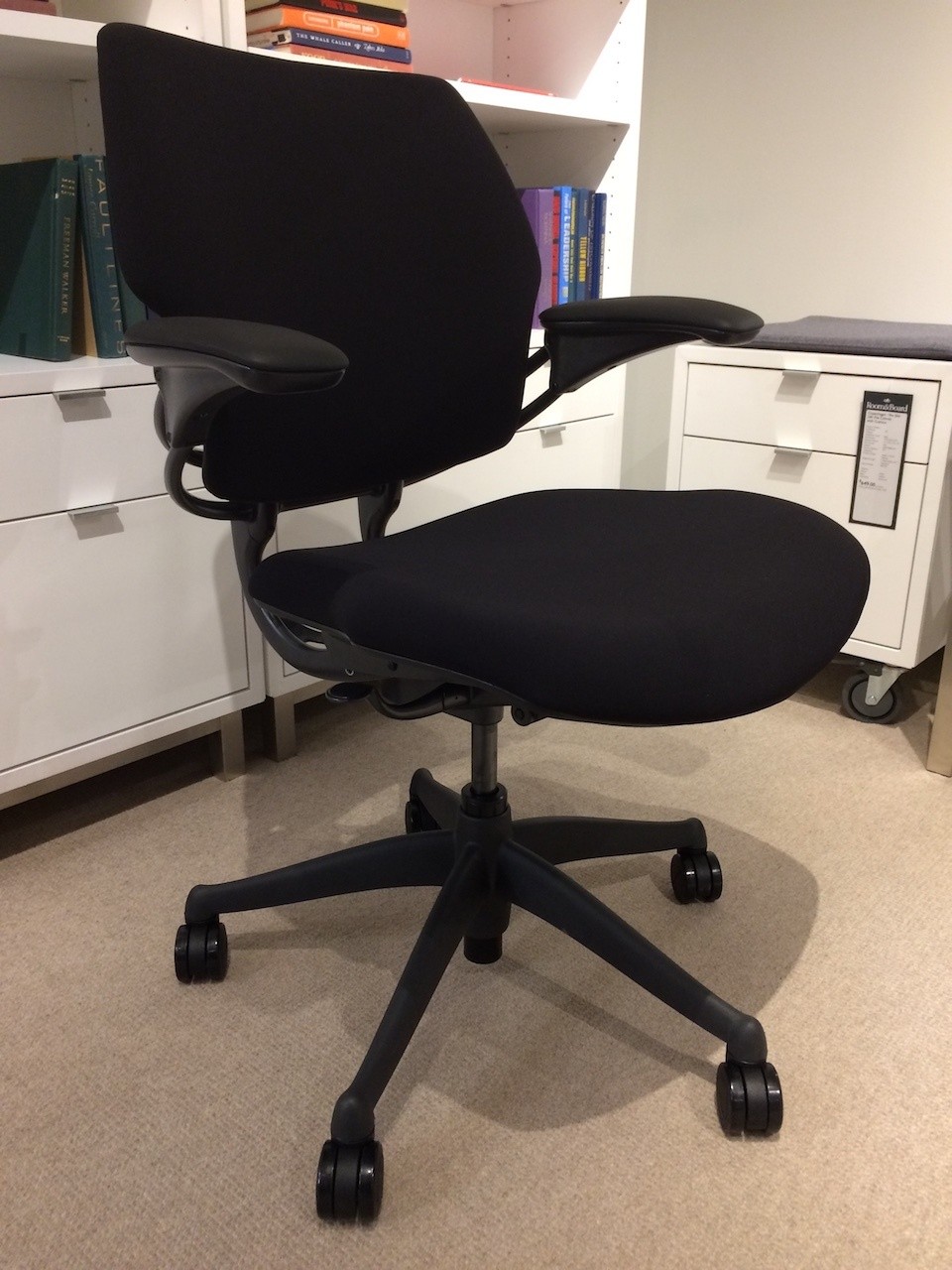
It has a few other controls, which we’ll get to in a bit, but let’s start with the most significant factor in whether or not this chair is going to work for you, which is the…
Recline style
The Humanscale Freedom chair has three different recline mechanisms operating at the same time; a backrest swivel, a backrest-only recline, and a seat riser.
A backrest swivel rotates the backrest itself at a fixed point, pushing forward into your lower back, and falling backward at your upper back or shoulders, like this:

At the moment, every one of Humanscale’s ergonomic chairs includes this feature (although the additional mechanisms might differ between models), and the backrest swivel is a highly effective way of providing on-demand lumbar support without requiring manual adjustments. You simply sit down, lean back, and the backrest swivels to accommodate the angle and shape of your back.
Its implementation on the Freedom, however, isn’t quite the best; the backrest is cushioned, but stiff, and not necessarily an exact-match for any spinal angle, whereas Humanscale’s Liberty and Diffrient Chairs use a mesh backrest that conforms effortlessly to any curvature with no pressure points. It isn’t bad on the Freedom, but it wasn’t quite right…even with the height-adjustable backrest, which we’ll see in a moment down below. It’s also just…rickety. It clacks against other plastic components as you move around, whereas the other chairs from Humanscale are smoother, and quieter.
The second mechanism is a backrest-only recline, which I’ve never considered ideal. After the backrest swivels, the backrest falls backward even more, but since the seat angle stays more or less the same, you’ll eventually feel like you’re sliding forward out of the chair.
Here’s what it looks like, after the backrest swivel has moved as far back as it can go:
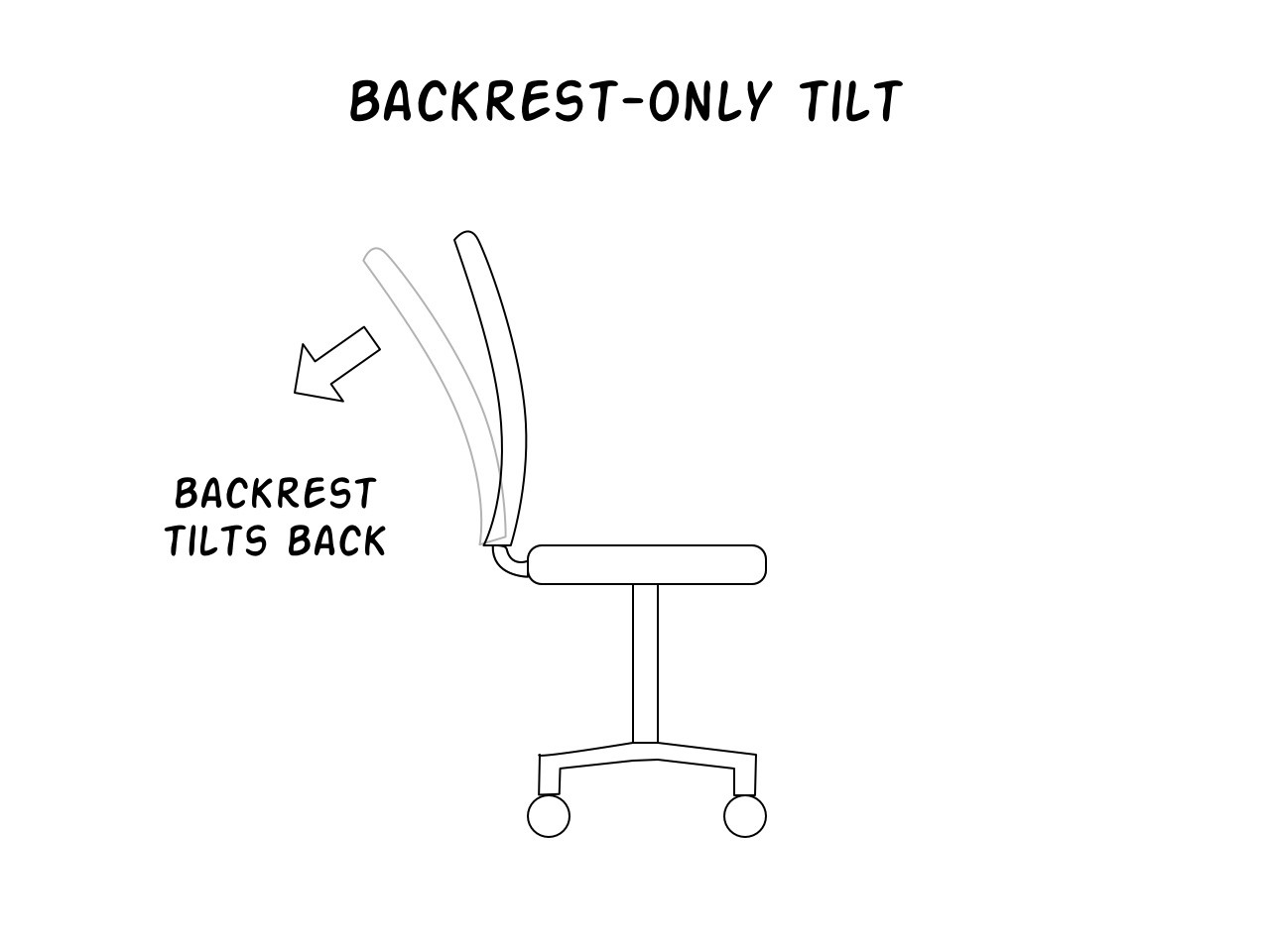
Another problem with this method is how it runs into trouble with the “lumbar gap” (explained here). The short version is that as you tilt further backward, your lower back eventually loses contact with the backrest, opening up an air gap and therefore providing no lumbar support whatsoever.
Once you’re reclined all the way, you don’t quite need as much lumbar support, but after having tried alternatives like the Humanscale Diffrient World chair, which does not have this problem at all, it seems like the Freedom could use an update.
Lastly, it has a seat riser. As you recline, the seat lifts upward about an inch. I’ve never quite understood the point of this, although the closest thing I can theorize is how it prevents you from sinking downward as you recline; which is fine, but not especially important. Also, the Freedom chair seems to lift the back of the seat more than the front of the seat, changing the angle so it feels even more like you’re sliding out of the chair.
Whether it’s from the backrest swivel or backrest-only recline, the chair is going to feel like it’s pushing you forward, so that your thighs feel like they’re moving forward inside your clothing, creating some mildly uncomfortable pressure. A synchro-tilt mechanism, which lowers the seat down in back, would eliminate this problem completely, which is why it tends to be my personal preference over a backrest-only recline.
It is, however, fine if you like sitting upright. You won’t run into the lumbar gap problem, nor the sliding-forward sensation from the recline. And it’s not a significant problem, but at this price point, I would prefer zero problems, and I think synchro-tilt mechanisms are simply a better recline method.
Adjustments
As mentioned, the Freedom chair has a self-adjusting tension mechanism that accommodates a user’s body weight, and I find the balance it hits to work especially well. It was just right for allowing easy-enough forward and back recline operation, without feeling too resistant or too weak. Personal preference is going to be a factor here, and it’s more of a sticky-back than a rocker (meaning it kind of “stops” at a certain recline angle, and takes just a bit of pressure to move again, rather than gliding all over the place freely), but it’s functional, and also very smooth. Recline tension is constant throughout, rather than starting off weak and then tensing up, which I’ve seen on other chairs (such as the Steelcase Think), and when you hit the furthest point on the recline, it’s not a jarring hard stop, but more of a softened one, which is nice.
Other adjustments include seat height, seat depth, backrest height, and armrest height. That’s it. The recline mechanism adjusts by itself, and the backrest swivel tension has no adjustment. I didn’t have trouble finding the right fit, but it’s somewhat limited compared to more complex office chairs with a multiple extra features. Again, they’re going for simplicity here, but I found the limited range of adjustments to work fairly well.
There’s a headrest option as well, which adjusts by simply pulling up or down on the headrest, going along with the intuitive design of the other controls.
One of the more unusual adjustments is the backrest height, which you can adjust with the lever near the bottom right of the backrest itself:
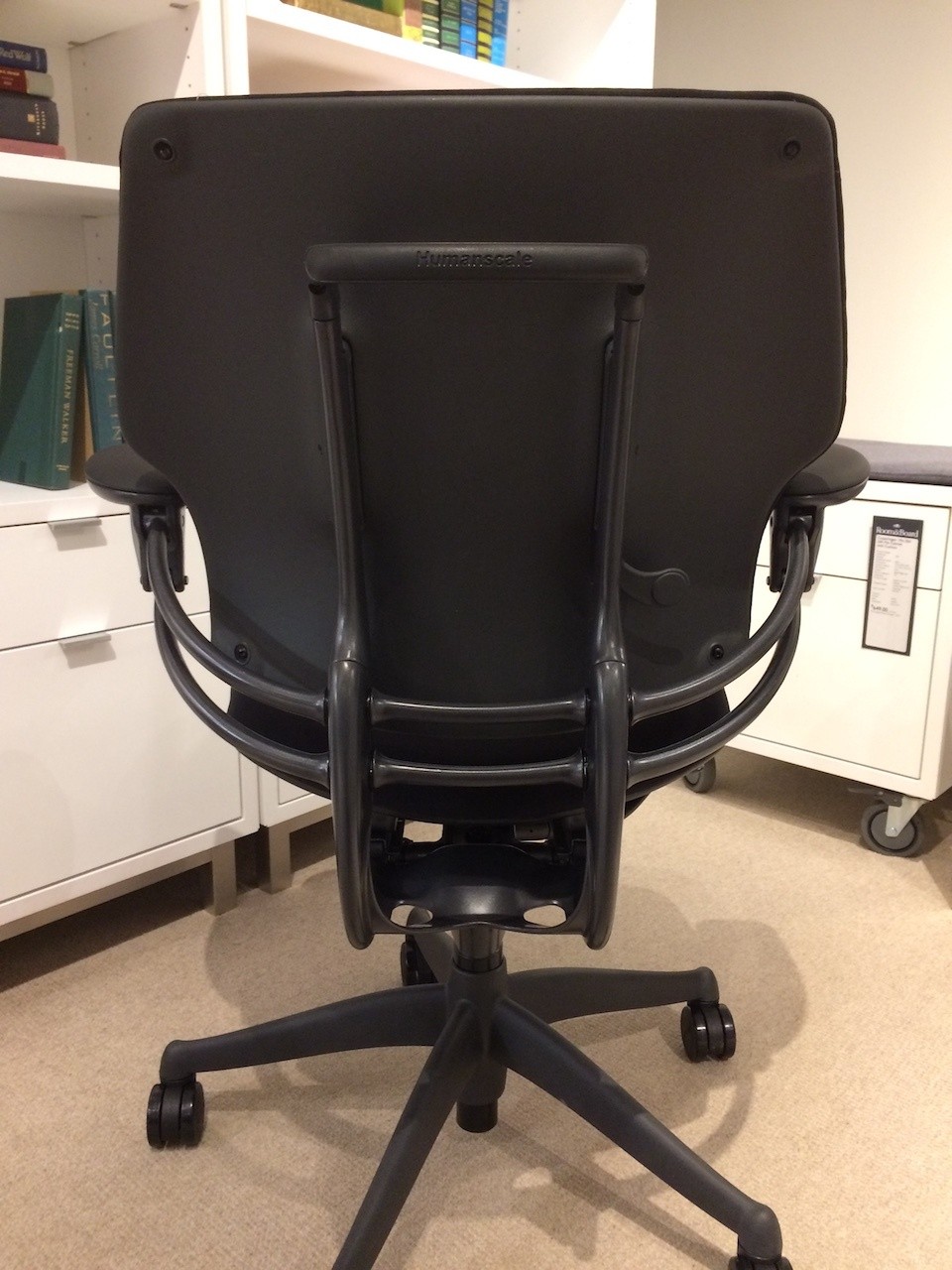
I found this to be fairly useful in getting the fit right, but I also think it would have worked to use a more malleable cushion or flexible backrest, like the ones used on Humanscale’s Liberty or Diffrient chairs, to accommodate user preference without adjusting at all. But the backrest on this one is somewhat stiff, meaning this feature was important for this design.
The armrest height, by the way, is synchronized…so this would be a good time to move onto the…
Armrests
Take a look at the back of the chair from the side, where you can see the two rods going into each armrest (as well as a convenient grab handle up at the top, for moving the chair around):
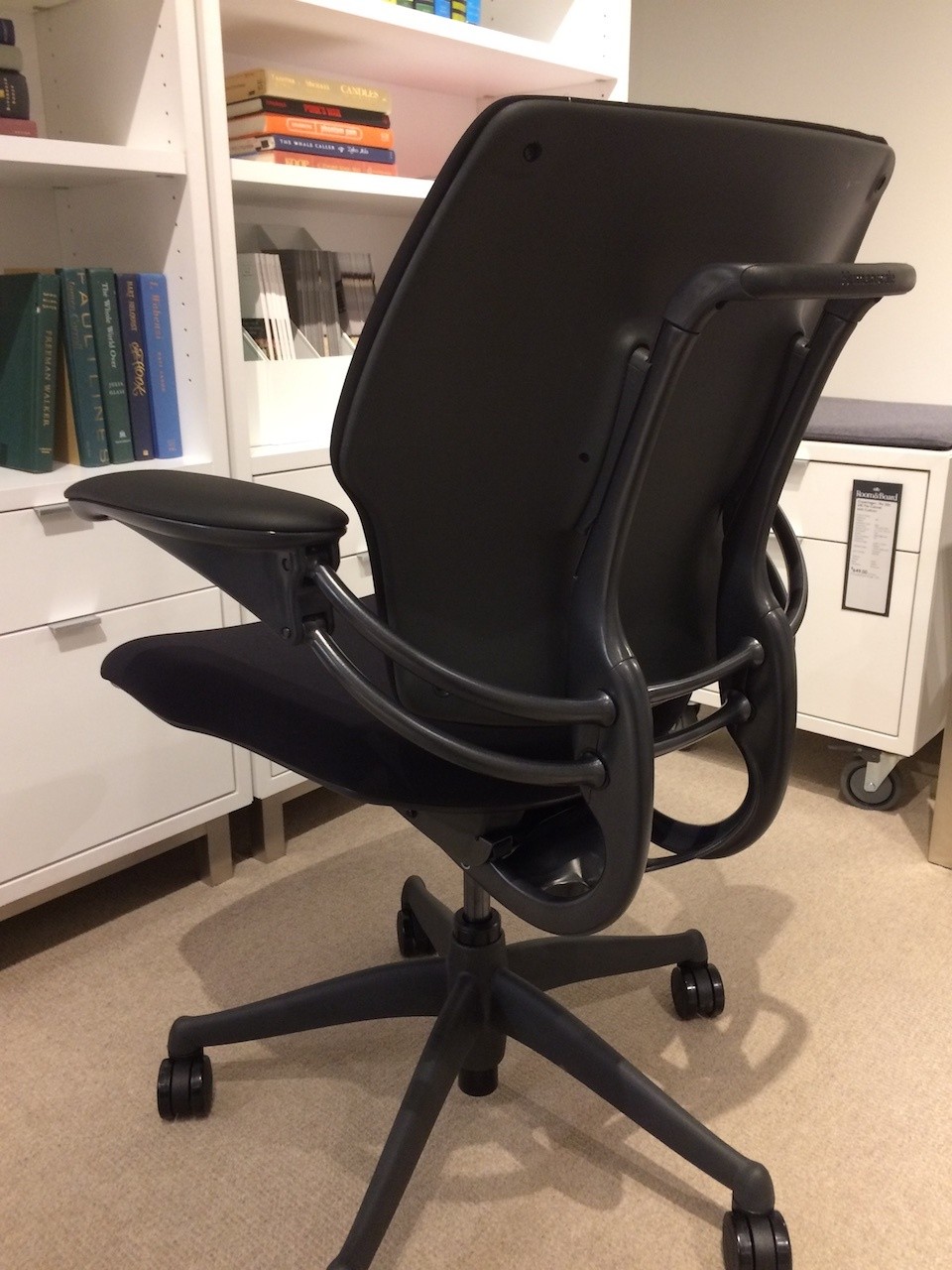
The armrests have the most intuitive height-adjustment controls I’ve ever seen on a chair. To raise them, you simply lift up from the front of the armrests, and they’ll click into place. To move them back down, you lift upward in front (and push down in back), and they’ll lower back down without needing a button. It’s quick, simple, intuitive, and definitely one of the nicer features of this chair.
Here’s a closeup-sideview, where you can see how the dual metal rod technique allows for easy up-and-down movement without a button:

They’re not otherwise adjustable, however. At this price range, that’s rather unfortunate, since many other competing chairs not only have height-adjustable armrests, but also width, depth, and angle. Those features can be incredibly useful for getting a precise fit, especially on larger or smaller users, or people using a keyboard who want a swiveled angle to support their arms as they type. The synchronized height-adjustment is also a double-edged sword; it’s easy to use, and you don’t have to worry about whether they’re adjusted equally, but it’s a problem if you need one raised up, and one lowered down. Not too many people need that feature, but again, this chair is about simplicity, so you have to live with it.
One of the features I’m not so happy about is how the armrests are attached to the backrest, and will therefore follow along with the angle of the backrest. When fully reclined, these armrests are going to be angled upward. It’s not so easy using a keyboard with the armrests when you’re fully reclined, and they might lift upward and bang the underside of a desk unless they’re adjusted pretty low.
They can, however, adjust quite low. Here’s the highest point:
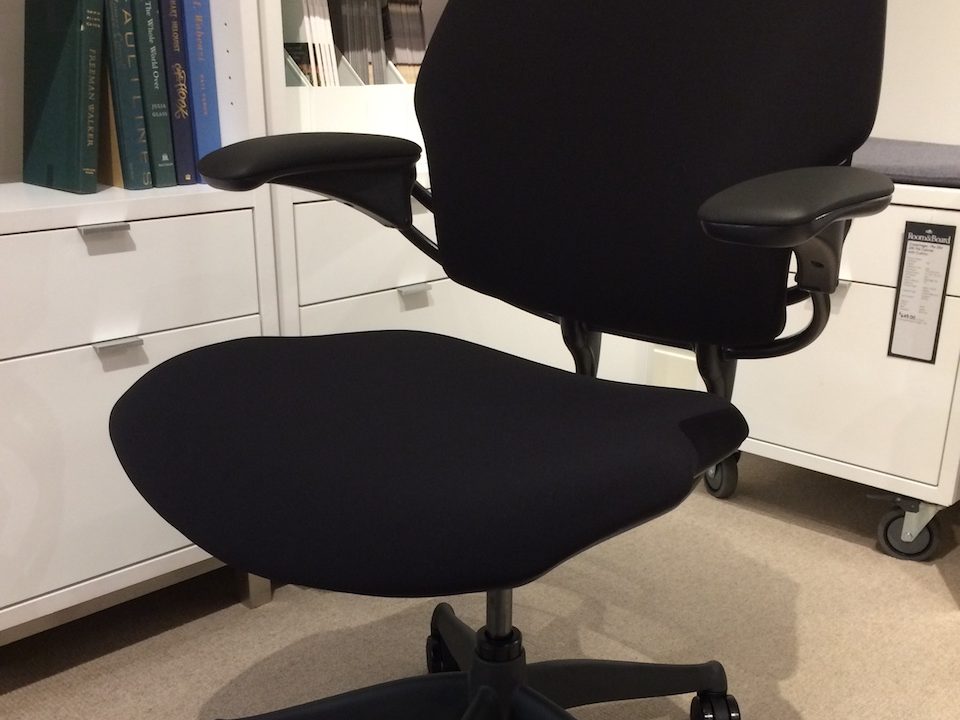
And here’s the lowest:
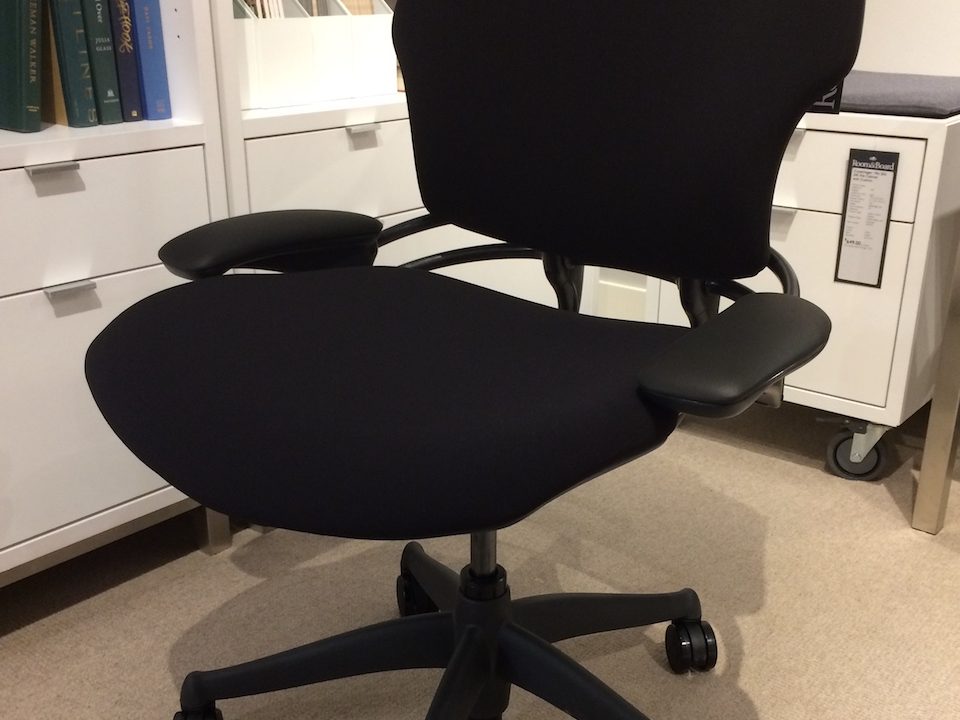
I do like how they can move completely out of the way if you’re not using them, but you might have to adjust them lower than you might ordinarily like, simply because they follow the backrest angle, and will angle upward too high if you like to recline.
Lumbar support
Though it doesn’t have any additional lumbar support components, the height-adjustable and swiveling backrest work well enough to move into your lower back, providing support as soon as you sit down.
As mentioned, however, the Freedom chair doesn’t solve the lumbar gap problem, and the further you recline, the less lumbar support you’ll get. At a full recline, I lost contact with the lower back completely. Again, this is one of the inevitable problems with the backrest-only recline mechanism. Humanscale’s Diffrient World Chair, on the other hand, combines a backrest tilt with a seat slider, and simply has more aggressive lumbar support in general, and doesn’t have this problem.
If you like sitting upright (relying on just the backrest swivel, but not the additional recline), you won’t run into this problem. You won’t run into the armrest-angling problem either, so that would be a good way to use this chair.
Waterfall edge?
Though it doesn’t have a flexible seat edge, the front edge of the seat is nicely contoured, and didn’t cause me any trouble with pressure along the back of the thighs. This can often be a problem with chairs that also have a seat riser, such as this one, but it’s curvy enough that it wasn’t a problem.
One last photo before we wrap this up:
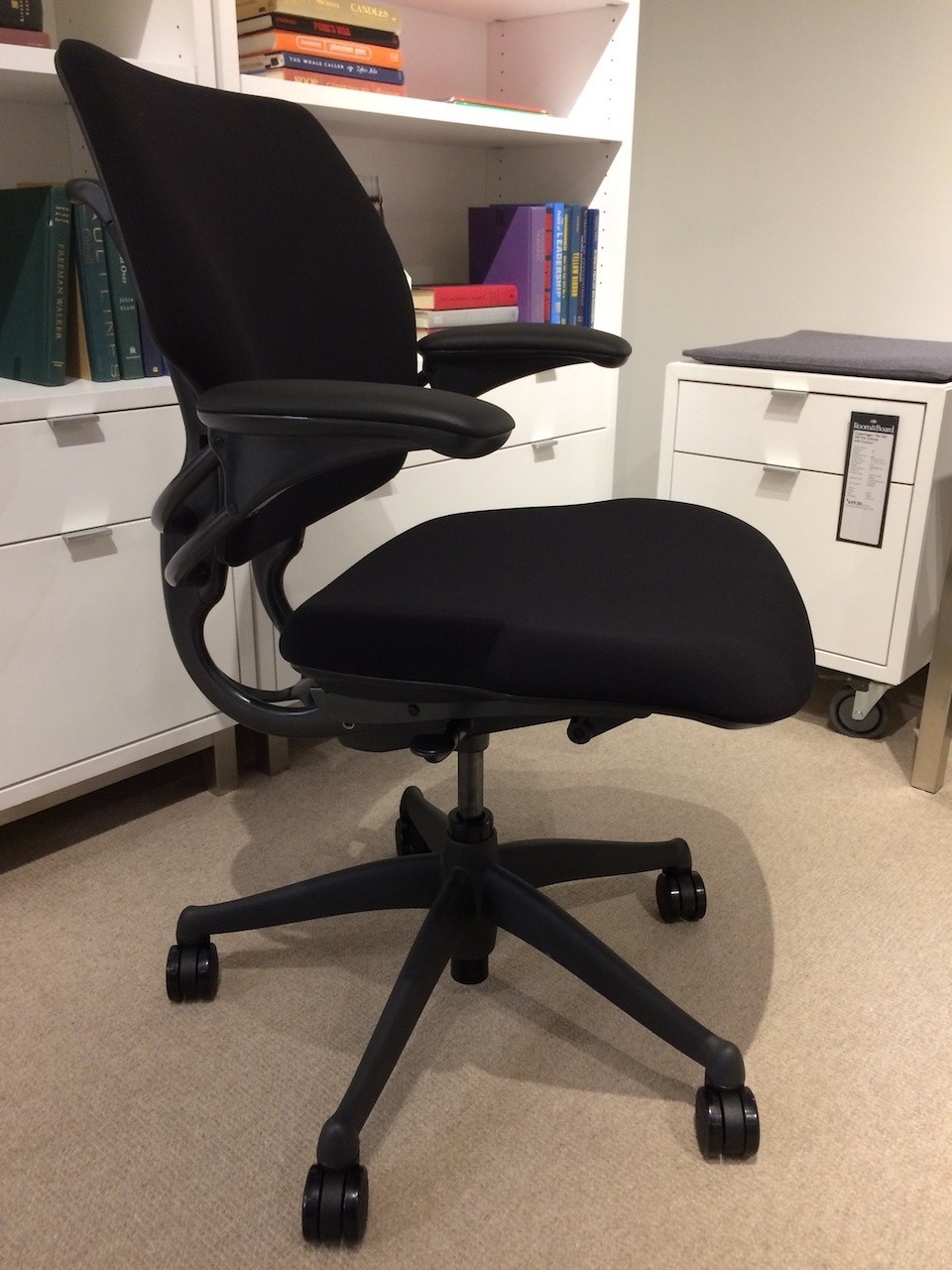
Conclusions on the Humanscale Freedom Chair
All in all, there’s a lot to like about this chair, and it really raised the bar for self-adjusting mechanisms at a time when plenty of alternatives felt like overly-complicated and confusing machines. The Humanscale Freedom chair can accommodate all sorts of users of different sizes, and with its intuitive controls, it can work especially well for shared seating.
Though its limited adjustments mean you might not get exactly the sort of fit you might want, my biggest problem with the Humanscale Freedom chair was the recline mechanism, which makes you feel like you’re sliding out of the chair. I much prefer a synchro-tilt mechanism, which eliminates this problem completely. The disappearance of lumbar support at a full recline is also a problem, and the sharply-angled armrests, which rise up with the backrest to the point that they’re no longer useful for typing at a full recline, can be rather frustrating. It also just feels a bit rickety, both in the slight clacking noise of the backrest swivel, and armrest adjustment mechanism.
Furthermore, Humanscale has simply done it better elsewhere. The Liberty chair essentially takes all the functionality of the Freedom, except it has a mesh backrest that conforms to your back much more closely than the plastic contours of the Freedom. The Diffrient World chair takes this idea and adds a forward-sliding seat instead of just a backrest-only tilt, solving the lumbar gap problem completely. The Diffrient World chair’s armrests are also connected to the chair beneath the seat, so they stay in place while you recline, keeping them horizontal and useful throughout. Either one of these is simply a superior iteration on the initial design of the Freedom, and they’d be worth looking into instead. I ran into unrelated problems with the Diffrient World chair (check out a review here), but its recline style is simply better, though it has some unfortunate quality control issues.
So those are my mixed feelings on the Freedom chair. Simple, intuitive, attractive, and pleasant, but with a backrest-only tilt that makes it better when it’s upright than when it’s reclined. If you like sitting mostly upright, you won’t run into the same trouble with the recline mechanism sliding you forward, the lumbar gap problem, or the rising armrests, and in that case, it can work nicely, and will operate simply and easily.
If that’s what you’re looking for, check it out on Amazon.
